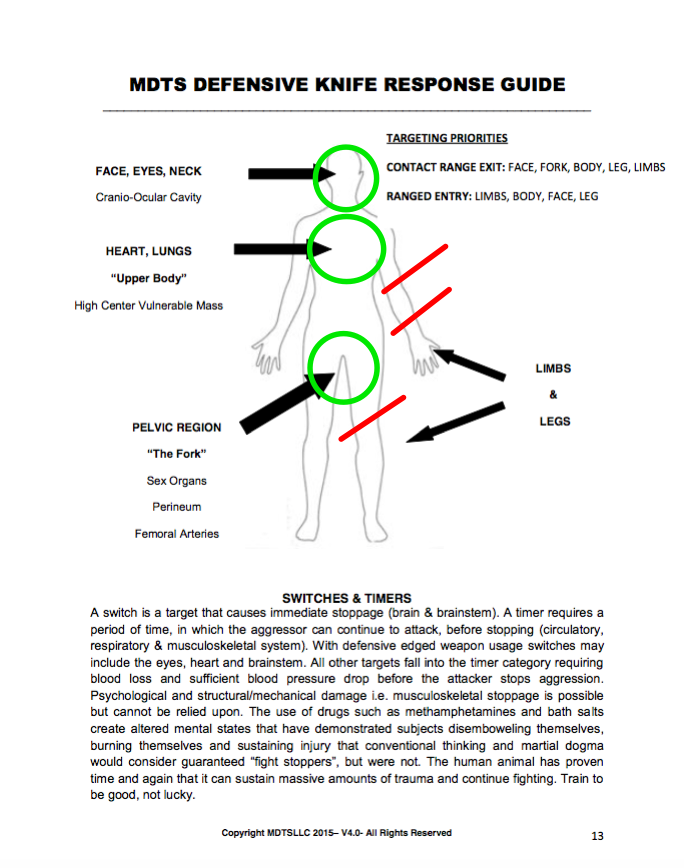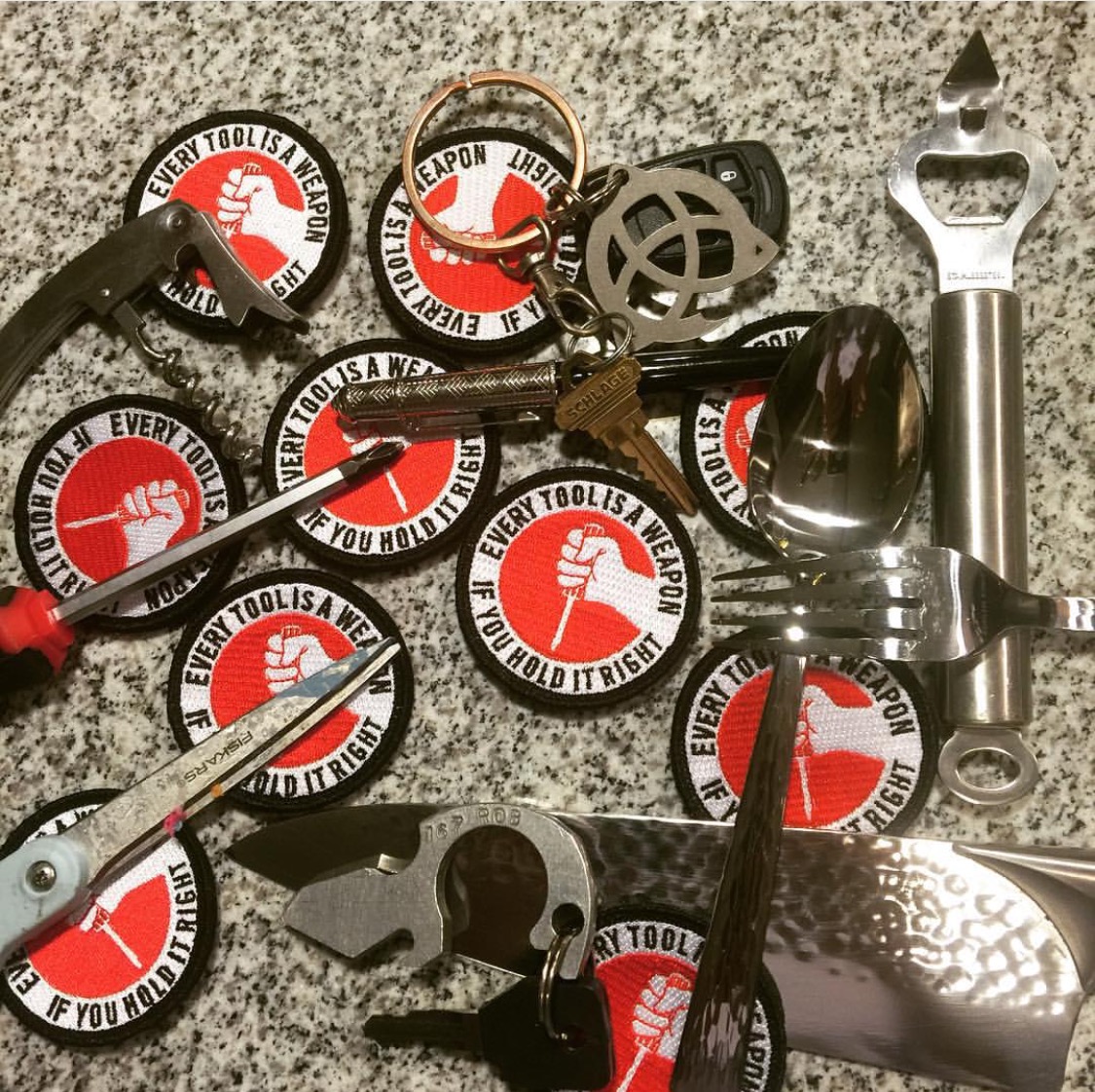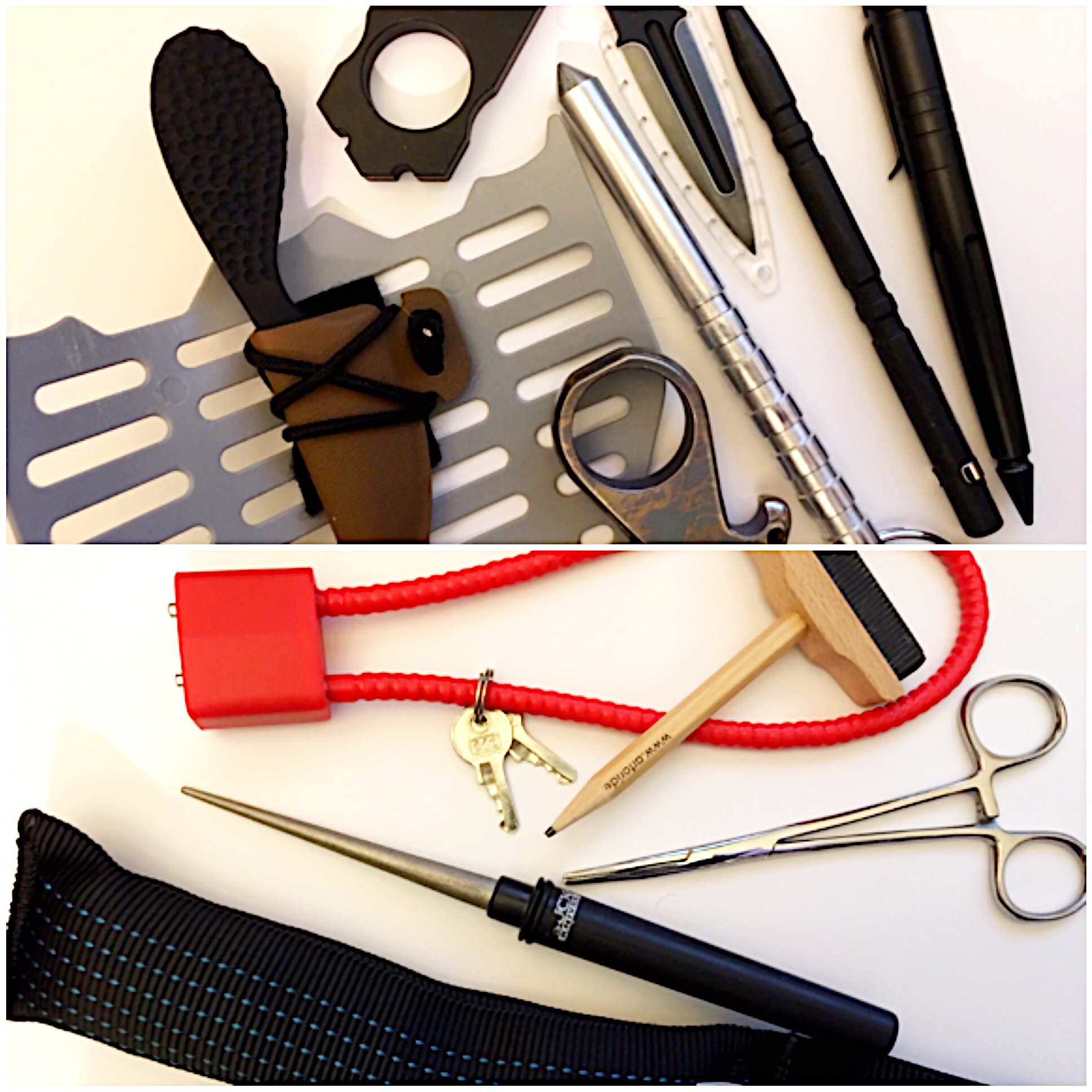
On December 1, Rob Pincus and I had discussed improvised defensive tools on the PDN Live broadcast. While we had the opportunity to talk with viewers about mindset and various tools seen in the personal defense industry we didn’t really have time to touch on application of those tools during a defensive incident. So, in an effort to cover some applications of defensive improvised tools I wanted to touch on a few key points here. A good starting point is to identify targeting priorities and understand the mechanisms of stopping a human aggressor.

Every Tool Is A Weapon, If You Hold It Right
Paul-E-Palooza3 Memorial Conference Patches with a number of improvised defensive tools.
Photo courtesy of Rob Pincus
Regardless of the improvised tool, methods to effectively apply these tools in defense of life should be studied and practiced. A knife is a penetration and cutting tool creating both physical and psychological trauma. Improvised tools fall into penetrating and impact applications creating blood loss, like with knives, and or causing blunt force trauma; force delivered into the opponent. Where we penetrate or impact the attacker is important in regards to rapid cessation of attack or incapacitation of the attacker.
When in contact with the attacker such as a standing grapple or clinch, the face, eyes and neck should be the primary targets providing a strong psychological response and desire on the part of the attacker to disengage. If the head region cannot be easily reached the “fork”, or between the legs, offers a target rich environment for penetration and impact which also sends a strong psychological message to disengage.
If distance or range is present, apply the penetrating or impact force of the improvised tool to the incoming limbs (hands/arms) in an attempt to dissuade the attacker. Then the head region, body and legs can be targeted as range allows. Remember, the torso is muscled, has bone protecting the best organs and penetration has to be deep in order to cause sufficient fight stopping damage. Because of this, stick to “surface targets” like the face and fork with improvised tools.

When I was teaching my Hapkido classes, I challenged my students to go into each room of their residence, and find three improvised weapons. They could not use the bathroom or kitchen areas, (too easy) It was a good way to wake up awareness in them
I totally agree that anyone serious about personal defense should get training and practice with these self-defense tools.
Very Interesting article.
As a former law enforcement I'm very interest in this article.